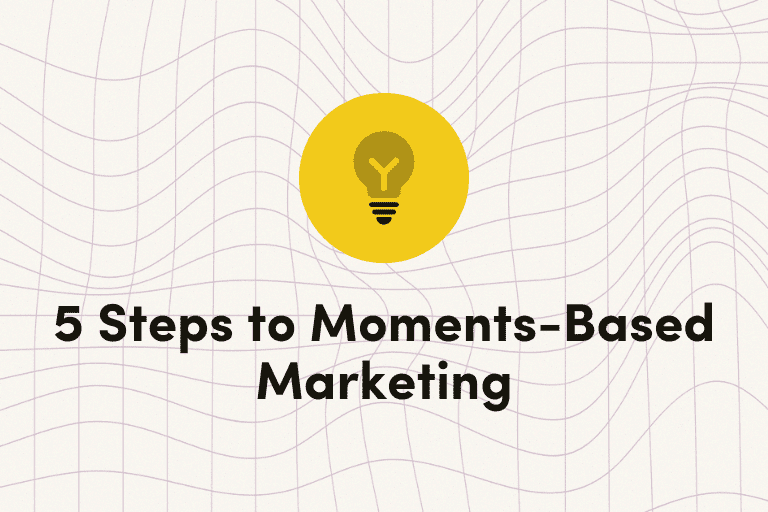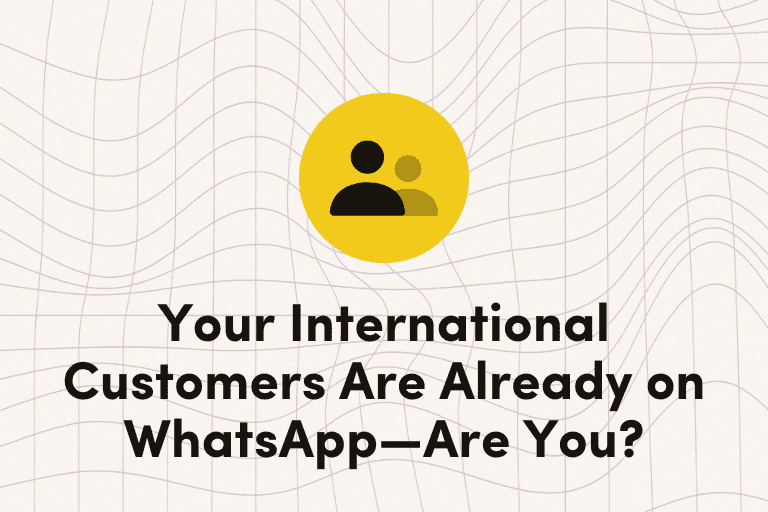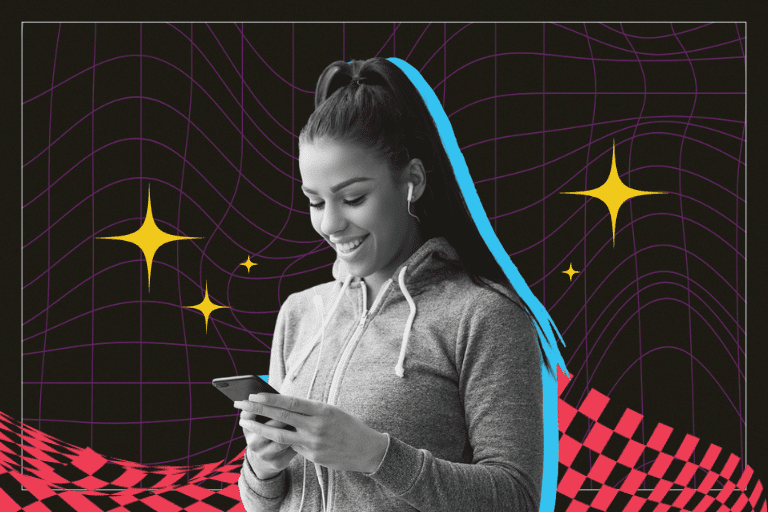

How to Build a Mobile Marketing Strategy with SMS and WhatsApp
Your customers live on their phones. Your strategy should too. In today’s mobile-first world, legacy campaign calendars just don’t cut it. To keep up, you need real-time, conversational channels that meet customers where they are—like SMS and WhatsApp.
-
Learn how to build a personalized, cross-channel mobile experience
-
Step-by-step guidance to scale mobile messaging
How to Build a Mobile Marketing Strategy with SMS and WhatsApp
Your customers live on their phones. Your strategy should too. In today’s mobile-first world, legacy campaign calendars just don’t cut it. To keep up, you need real-time, conversational channels that meet customers where they are—like SMS and WhatsApp.
-
Learn how to build a personalized, cross-channel mobile experience
-
Step-by-step guidance to scale mobile messaging


Introduction: From Campaigns to Customer Moments
In less than twenty relatively short years, our smartphones have gone from a new invention to a can’t-live-without necessity. They’ve become an extension of ourselves, like another limb, transforming the way we communicate and move about the world.
When your customers are always on the go, the traditional campaign calendar doesn’t make sense. You can’t foster real-time, customer-led engagement without harnessing the power of mobile channels. Text messages and messaging apps like WhatsApp are essential conversational tools to meeting your audiences where they are, making them truly invaluable mediums for brands to deliver 1:1 customer experiences across the lifecycle.
There are so many channels that make up a world-class mobile marketing strategy: email, push and in-app notifications, the mobile inbox, and more. But given their most intimate and immediate nature—and the fact that you don’t need a mobile app to use them—we’re going to focus this guide on SMS and WhatsApp specifically, as they can be highly effective for building trust, rewarding loyalty, and driving deeper customer engagement—especially when integrated with other marketing channels.
We’ll provide step-by-step guidance for building a conversational mobile strategy catered to your organization’s—and your customers’—specific needs and use cases.
Mobile Foundations: SMS vs. WhatsApp
SMS and WhatsApp are two mobile channels that any brand can leverage—regardless of whether they have a mobile application. Unlike push or in-app notifications, businesses can communicate with their customers using just a phone number.
Let’s dive into the differences between SMS and WhatsApp.
SMS
50% of consumers prefer to receive brand updates via text, but only 20% of consumer brands actually send SMS messages to their customers.
SMS, or Short Message Service, is a text messaging service typically transmitted over cellular networks. Rolled out in 1993, SMS enables users to send and receive text messages of up to 160 characters.
MMS, or Multimedia Messaging Service, was later introduced in 2002 and allows longer messages, as well as a wider variety of rich media, including images, audio, and video.
| Iterable SMS comes with built-in support to help you navigate the nuances of number registration, implementation, and delivery. |
WhatsApp, launched in 2009 and acquired by Meta in 2014, is the world’s most popular messaging app with three billion monthly active users.
The average open rate for a WhatsApp message is 98%, and users spend approximately 34 minutes in the app per day.
Since 2018, the WhatsApp Business platform has allowed marketers to leverage the WhatsApp API to deliver two-way conversations with customers using interactive calls-to-action, dynamic product lists, rich media, and more.
| Iterable’s native WhatsApp integration and built-in guidance make it easier to navigate the nuances of the WhatsApp Business Messaging Policy, simplifying template creation and reducing manual mistakes. |
WhatsApp is a powerful channel to help your brand drive real-time engagement and reach a massive global audience. While companies around the world communicate with customers via WhatsApp, the platform is especially useful for North American brands to message their international users.
For more information on how to engage your international audience with WhatsApp, check out our on-demand recording of Iterable’s Activate session.
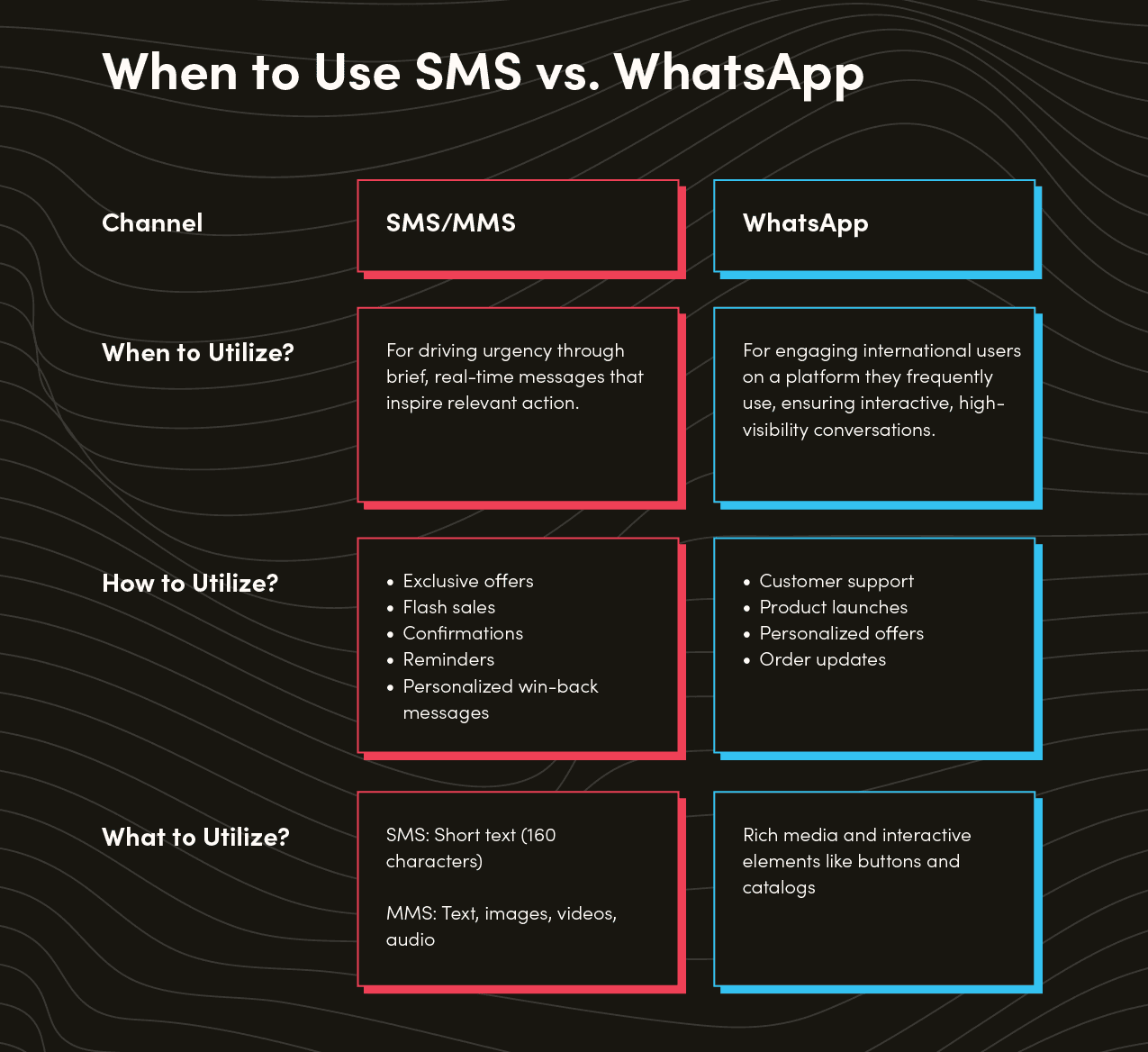

5 Strategic Questions for Mobile Messaging Readiness
To be invited into someone’s personal space is an immense privilege. That’s why it’s absolutely critical to understand why and how you plan to use mobile channels like SMS and WhatsApp. We’ve come up with five questions to ask to determine your brand’s readiness to use SMS and WhatsApp in your customer communications:
- What are your use cases?
- What types of messages do you plan on sending?
- What’s your budget and timeline?
- How are you gathering customer phone numbers?
- What are your KPIs?
Let’s dive into each of them.
1. What are your use cases?
SMS and WhatsApp don’t have an “I” in them—but your strategy should. In fact, it should have four. Here is what each means and the different examples of marketing and transactional messages they can include.
Intimate and Individual
Conversational interactions should be meaningful and personalized to cultivate an established relationship with each customer that strengthens their brand loyalty.
Examples
- Happy birthday offer: Send a special offer the user can redeem on their birthday.
- Milestone recognition: Acknowledge customer achievements as they relate to interaction with your brand or products.
- Requests for feedback on purchases: Ask customers to rate their recent purchases. SMS surveys have the highest response rate (40%) of online survey channels.
- Appointment reminders: Let a user know about an upcoming appointment, including any related forms they need to fill out, or identification/insurance they need to bring.
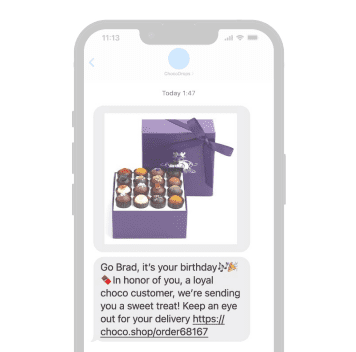
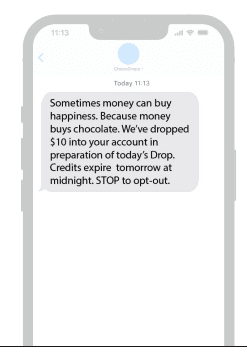

Immediate and Informative
Messages should ideally offer valuable, wanted information with a sense of urgency that carry instant customer opportunity.
Examples
- Flash sales and time-sensitive promotions: Sales or discount codes announced exclusively via text or WhatsApp message are a great way to build excitement.
- Order confirmations: Keep the user updated about a recent purchase or subscription renewal.
- Alerts: Send up-to-the-minute messages about news, weather, traffic, sports, and more.
- Transactional delivery/pick-up notifications: Let a user know their order is out for delivery or ready for pick-up at your store.
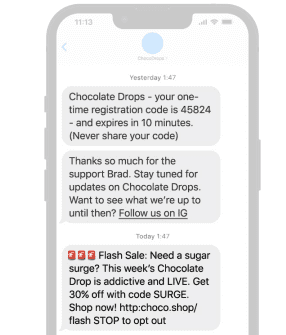

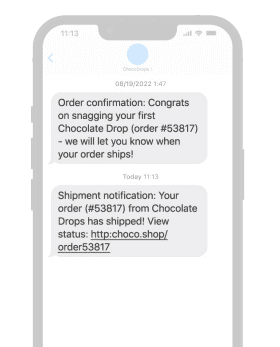

2. What types of messages do you plan on sending?
Mobile messages generally fall into two core categories: transactional and promotional. Defining these early helps you build compliant, customer-first messaging strategies across SMS and WhatsApp—and supports smarter orchestration within your journeys.
Transactional messages
These are time-sensitive, service-related notifications customers expect. Common examples include:
- Shipping confirmations and updates
- Appointment reminders
- Password resets
- Out-of-stock and restock notices, if requested
- Monthly subscription confirmations
- Important notes requiring action or attention
Promotional messages
These are marketing-driven messages intended to drive engagement or conversions, like:
- Weekly deals
- New product announcements
- Event invites
- Flash sales, coupons, and time-sensitive promotions
- Shopping cart abandonment notifications
- Birthday, anniversary, and milestone recognition
Transactional and promotional messages should be separated, each with its own phone number and code. Sharing numbers can result in critical issues related to opt-out management and business growth. Here’s why:
Why You Should Separate Promotional and Transactional Traffic
Separating these two message types is not just a best practice—it’s often a requirement for:
- Compliance: Many regions restrict promotional message send times. For example, some countries allow marketing texts only during weekday business hours.
- Timeliness: Ensures time-sensitive transactional messages—like one-time passcodes or order pickup details are delivered quickly without delays caused by promotional volume.
- Personalization: Gives customers more control over what they receive—some want delivery updates, but not flash sales.
- Expectation Management: Helps set clear boundaries for content and frequency, reducing opt-outs and boosting satisfaction.
You should also use separate keywords for each message type (e.g., “Text STATUS” for transactional alerts and “Text DEALS” for promotions). Keywords help trigger the right automations based on the markets and content in which a user has shown interest––so you don’t send every message on every topic to every person.
| Pro Tip: A mobile marketing partner like Iterable can help you set up your backend strategy, workflow, and keywords so that you send the most important messages compliantly and at the correct time. |
3. What’s your budget and timeline?
SMS and WhatsApp communications are not sold on a CPM basis like traditional advertising. Rather, there are a few factors that go into calculating your budget range for launching your mobile marketing strategy.
For SMS
- Domestic vs. International: Factor in whether or not you are sending messages within your native country or to an international location, as other countries will have variations in pricing.
- SMS vs. MMS: Because MMS includes media, message costs might run higher, depending on which service you use.
- Short code vs. long code: Short codes can cost up to $10,000/year on average, while a long code can cost a few dollars and between two and five cents to send messages. Additionally, consider your desired throughput (messages sent per second), which is higher with short code than long code.
For WhatsApp
- Prerequisites: To leverage WhatsApp in a marketing platform like Iterable, you’ll need access to a Meta Business Manager account and a new phone number that’s capable of receiving SMS messages (and voice calls for number verification).
- Clear cost structure: Work with a partner that offers transparent, real-time pricing so you can forecast costs accurately and avoid hidden fees as you scale.
| Pro Tip: You can multiply the per-message cost by the number of opted-in users to whom you plan to send communications to finalize your budget. |
Your timeline for getting up and running largely depends on the type of number you plan to use. Short codes for SMS can take between eight and twelve weeks to get approved and go live on major carriers—in some cases, it’s even longer. Working with a trusted partner can help you expedite this process.
You’ll also need to estimate how long it will take to gather customer phone numbers to use for mobile marketing. This will likely happen on a rolling cadence. While WhatsApp does not have this requirement, some SMS marketing platforms require at least 1,000 opted-in phone numbers to get started, but with Iterable, you can leverage text messaging right away.
4. How are you gathering customer phone numbers?
Just like with any first-party data you gather from users in other marketing channels, you must incentivize your customers to give you their phone number and opt into messages due to the perceived value of engaging with your brand.
You’ll also want to use other channels such as email, push, or in-app in your marketing mix to drive to SMS and WhatsApp. Some ways you can entice users to sign up include:
- An exclusive discount, such as an extra 20% off their order
- Freebies, like a cup of coffee
- Free resources, such as guides or e-books
Using established digital marketing channels can help you cross-promote mobile sign-ups. Your website is a prime place because of the real estate and functions available:
- Banners and pop-ups
- Landing pages
- Customer service chats
- Point-of-sale checkboxes
- And more
You could send an email that encourages sign-ups through the copy or in the signature. On social media, you can use a URL, QR code, or keyword to capture opt-ins.
SMS Opt-In Policy
From here, you need to figure out whether you want to pursue single vs. double opt-in to get consent to message users who provided their numbers:
- Single opt-in, in which a user agrees to receive mobile messages from your brand with a single “Yes,” is the strategy to choose if you want to grow your list faster, as there is no secondary confirmation to complete the opt-in. However, this may yield more opt-outs down the road.
- Double opt-in requires a user to say “Yes” to the channel twice. So while you may grow your list slower, you’ll have a more loyal base and fewer opt-outs downstream. Although not required by law, using double opt-in will depend on your strategy and business model.
SMS Opt-Out Policy
Your user opt-out subscription policy is just as important as your opt-in policy. That’s because if you message a user who has opted out, you are out of compliance, which can result in fines of $1,000 or more.
A best practice is to send opt-out instructions with every campaign, as some carriers do filter SMS messages that don’t have these details. At minimum, you need to have opt-out instructions with the very first campaign that you send to a user.
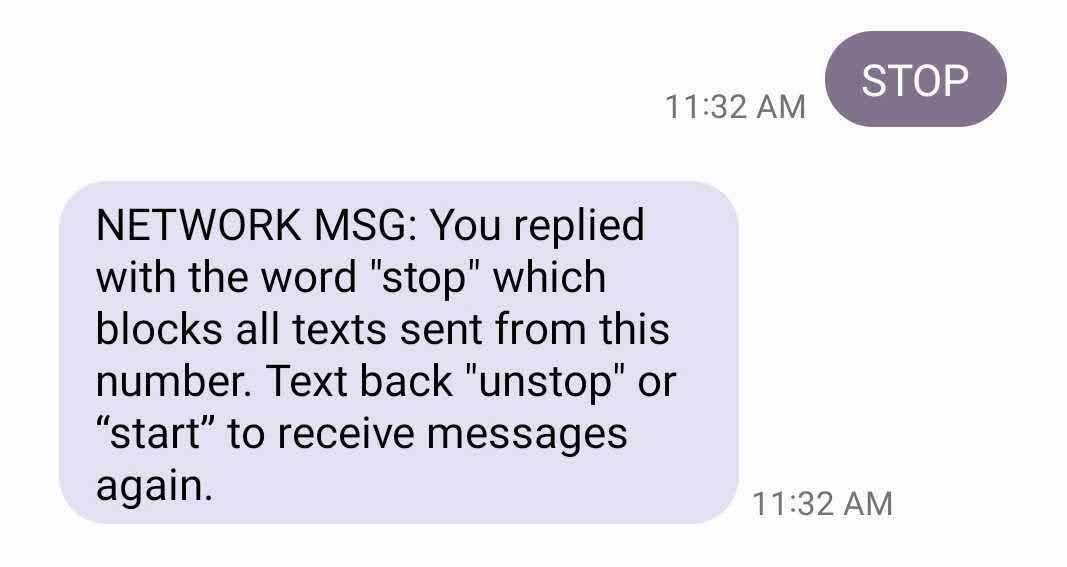

Source: Twilio
One thing to note is that opt-out instructions are included within the overall character limit for SMS, so aim to be as short and concise as possible.
What Is E.164? E.164 is the international telephone numbering plan that ensures each device has a globally unique number. When you message users, the value must be E.164-formatted, in which you put the country code, area code, and subscriber number so the number reads as: 12345678901.
5. What are your KPIs?
Mobile performance can be measured similarly to other marketing channels, specific to use cases and message types. Metrics that help keep a pulse on performance and optimization include things like:
- Audience size
- Message sends
- Messages delivered
- Bounces
- Send skips
Additional KPIs can be unlocked with a link shortener (and UTM parameters directly attributing website traffic from SMS and WhatsApp), including business outcome metrics around total purchases, average order value, revenue, conversions, and more.
This allows you to get even closer to attributing message engagement to pipeline influenced (revenue, customer lifetime value, and return on investment).
Looking at performance across audience cohorts can also be an effective way to understand engagement and performance across any user profile fields you currently have on your customer.
| In Iterable you can evaluate revenue and performance metrics based on country or state, brand affinity, or engagement cohorts like a loyalist vs. a neutral audience segment, and more. |
Cross-Channel Testing Strategy
Beyond campaign and business outcome KPIs, it can be helpful to start thinking through a testing strategy. The following can be helpful tests as you roll out, build, and refine your mobile messages within your cross-channel strategy:
- Test specific offers: This can be a great way to try out promotions and/or specific offers with a smaller subset of your audience.
- Test performance alongside other channels: Try testing SMS and WhatsApp against email engagement/performance, keeping the offer and messaging consistent.
- Test segmentation performance: Look at two audience cohorts (e.g. loyalists and new buyers) to determine engagement/performance differences between the two.
Make moments-based marketing a reality.
Learn how to create real-time, cross-channel engagement that makes every customer feel like they're your only customer.
